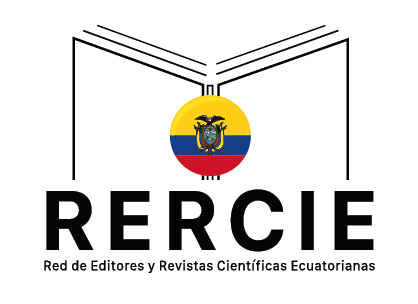Research Of Market Maturity Phases Of Energy Technologies
Palabras clave:
energy technologies, market positioning, hype cycle, patent and publication activityResumen
The article discusses the patterns in the market positioning of various energy technologies and identifies technological developments that are residing in the early stages of the market maturity cycle. The study is based on the use of the Hype Cycle conceptual platform and methods of cluster and classification analysis, the functionality of which is implemented using the Mclust software package from the realm of the programming language R. The information on patent and publication activity presented in global search engines Google Patents and Google Scholar has served as the informational basis for the analytical procedures conducted. The main provisions of the study were tested on the example of transformers for a voltage of 220 kV. For this technological development, its critical structural elements are identified, including heat exchangers with forced circulation of oil (air), oil-air coolers, on-load tap-changers, bushings with the main insulation of the porcelain tire, and bushings with gas insulation, each of which is analyzed from the point of view of existing patterns of its positioning on the Hype Cycle. It has been established that most of these structural elements are within the framework of the “slope of enlightenment” and “plateau of productivity” phases, which characterizes the energy technology under study as already established one, which, in combination of its characteristics, goes beyond the developments of an innovative profile.
Descargas
Referencias
Melnik, A.N., Sadriev, A.R. 2014. Formation features of the cluster-network model of energy companies' innovative development, International Multidisciplinary Conferences on Social Sciences and Arts SGEM 2014, STEF92, pp. 223-230.
Sadriev, A. R., Maierufi, M., Dyrdonova, A. N. 2017. Energy Efficiency Management Based on Innovative Development Indicators, Revista Publicando, 4(13 (3)), 950-960.
Melnik, A. N., Ermolaev, K. A. 2016. Investigation of a reciprocal influence of innovative development processes and energy efficiency enhancement in sectors of the Russian economy. In International Multidisciplinary Conferences on Social Sciences and Arts SGEM 2016, STEF92, pp. 915-922.
Lukishina L.V., Melnik A.N., Maierufi M. 2017. Innovative development of enterprises as a condition of Russian import substitution, Revista Publicando. – 2017. 4( 13 (2)), 823-833.
Pavitt, K. 1985. Patent statistics as indicators of innovative activities: Possibilities and problems, Scientometrics, 7 (1-2), pp. 77-99.
Pavitt, K. 1982. R&D, patenting and innovative activities. A statistical exploration, Research Policy, 11 (1), pp. 33-51.
Dang, J., Motohashi, K. 2015. Patent statistics: A good indicator for innovation in China? Patent subsidy program impacts on patent quality, China Economic Review, 35, pp. 137-155.
Yuan, F., Miyazaki, K. 2018. Patents and Networks: Case of discerning the evolutionary nature of technological change in the complex product industry, World Scientific Book Chapters, pp. 93-120.
Miyazaki, K., Tiecheng, J., Nishida, K. 2017, July. Co-evolution of technologies, key components and institutions in the case of smart houses in Japan, In 2017 Portland International Conference on Management of Engineering and Technology (PICMET), pp. 1-10.
Chan, S. K., Miyazaki, K. 2015, August. Knowledge convergence between cloud computing and big data and analysis of emerging technological opportunities in Malaysia, In 2015 Portland International Conference on Management of Engineering and Technology (PICMET), pp. 1501-1512.
Suryanegara, M., Miyazaki, K. 2012. Towards 4g mobile technology: Identifying windows of opportunity for a developing country, International Journal of Technology, 3 (1), pp. 85-92.
Fabry, B., Ernst, H., Langholz, J., Köster, M. 2006. Patent portfolio analysis as a useful tool for identifying R&D and business opportunities-an empirical application in the nutrition and health industry, World Patent Information, 28 (3), pp. 215-225.
Guan, J., Liu, N. 2016. Exploitative and exploratory innovations in knowledge network and collaboration network: A patent analysis in the technological field of nano-energy, Research Policy, 45 (1), pp. 97-112.
Xie, Z., Miyazaki, K. 2013. Evaluating the effectiveness of keyword search strategy for patent identification, World Patent Information, 35 (1), pp. 20-30.
Haupt, R., Kloyer, M., Lange, M. 2007. Patent indicators for the technology life cycle development, Research Policy, 36 (3), pp. 387-398.
Lee, C., Kang, B., Shin, J. 2015. Novelty-focused patent mapping for technology opportunity analysis, Technological Forecasting and Social Change, 90 (PB), pp. 355-365.
Grimaldi, M., Cricelli, L., di Giovanni, M., Rogo, F. 2015. The patent portfolio value analysis: A new framework to leverage patent information for strategic technology planning, Technological Forecasting and Social Change, 94 (1), pp. 286-302.
Ernst, H. 1998. Patent portfolios for strategic R&D planning, Journal of Engineering and Technology Management - JET-M, 15 (4), pp. 279-308.
Altuntas, S., Dereli, T., Kusiak, A. 2015. Forecasting technology success based on patent data, Technological Forecasting and Social Change, 96, pp. 202-214.
Huenteler, J., Schmidt, T.S., Ossenbrink, J., Hoffmann, V.H. 2016. Technology life-cycles in the energy sector - Technological characteristics and the role of deployment for innovation, Technological Forecasting and Social Change, 104, pp. 102-121.
Noailly, J., Smeets, R. 2015. Directing technical change from fossil-fuel to renewable energy innovation: An application using firm-level patent data, Journal of Environmental Economics and Management, 72, pp. 15-37.
Fenn, J., Raskino, M. 2008. Mastering the hype cycle: how to choose the right innovation at the right time, Harvard Business Press, 339 p.
Hastie, T., Tibshirani, R., Friedman, J. 2009. The elements of statistical learning: data mining, inference and prediction, The Mathematical Intelligencer, 27(2), pp. 83-85.



















